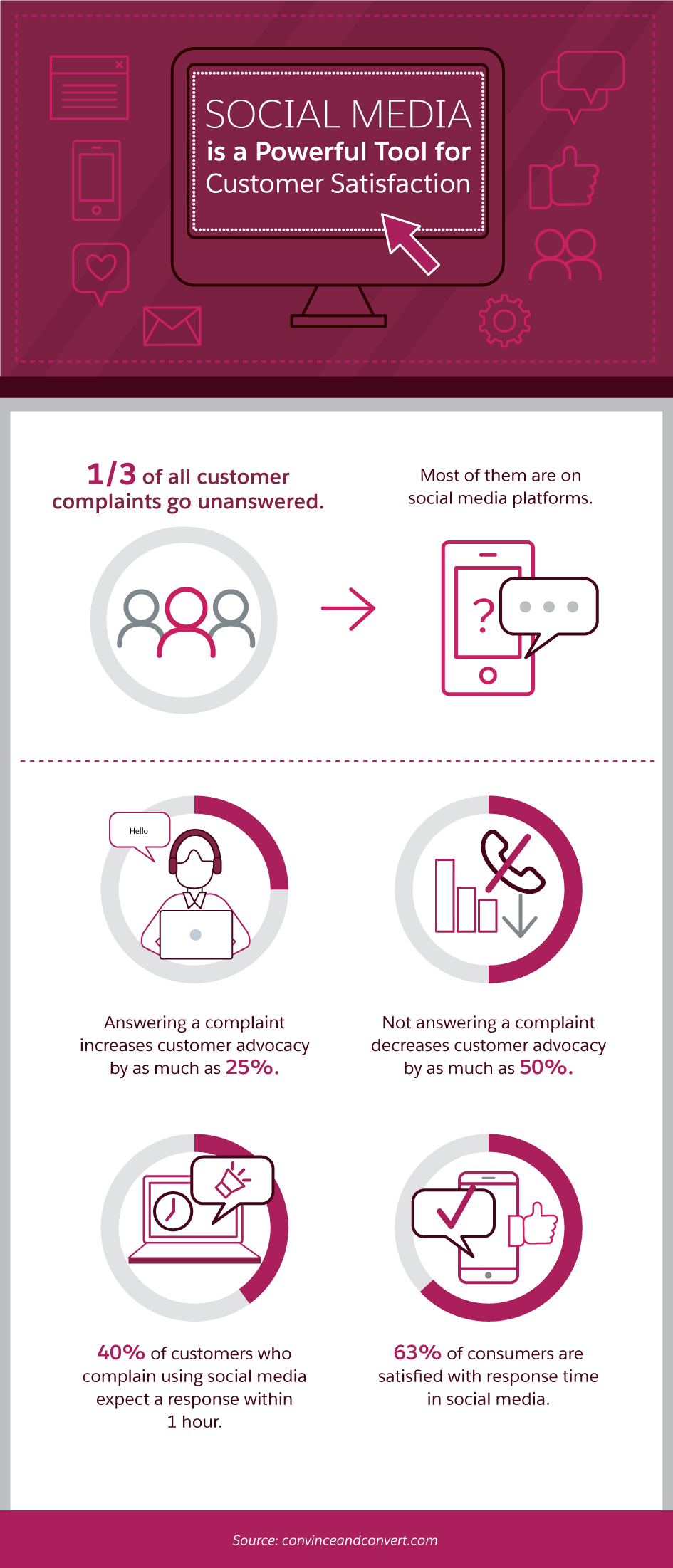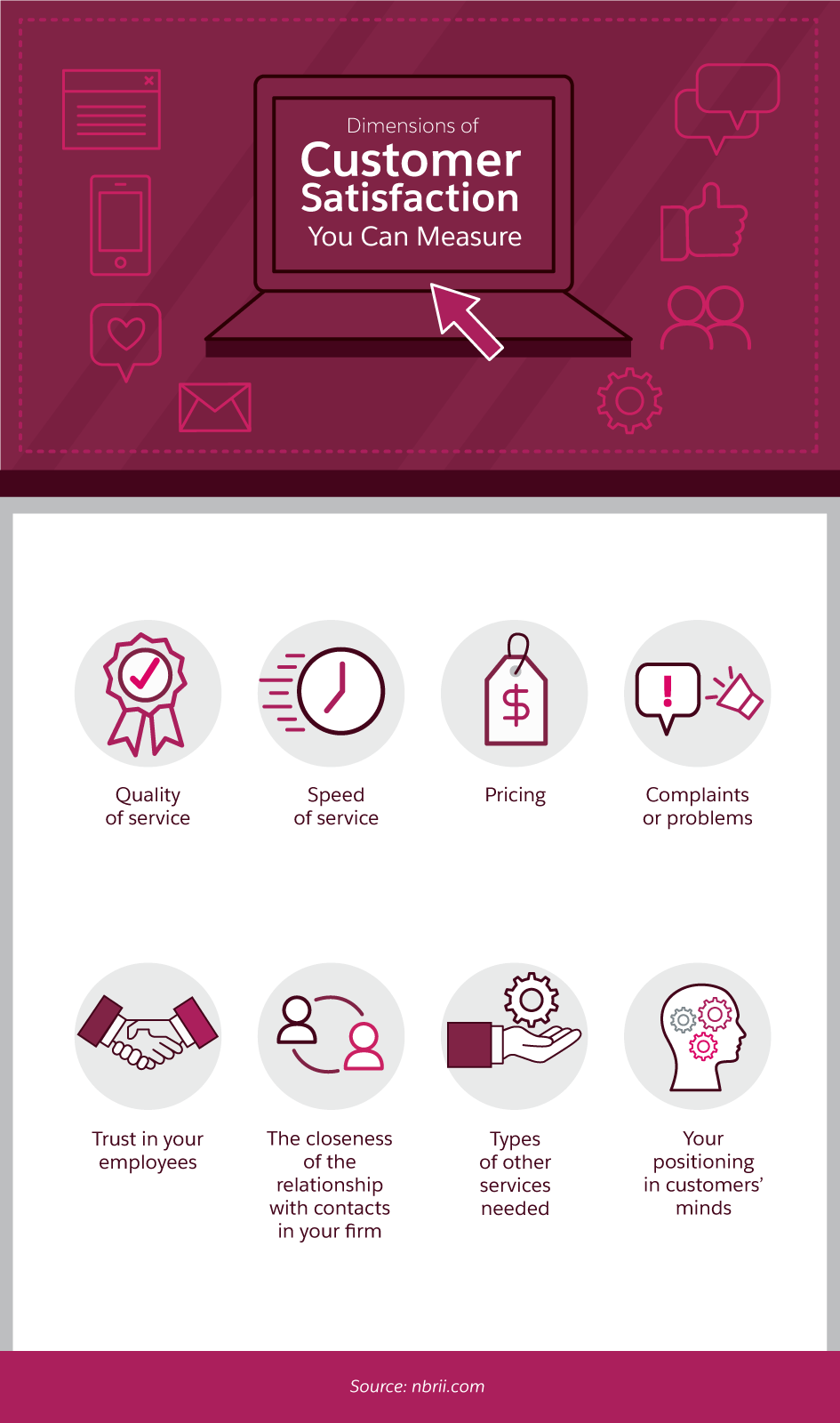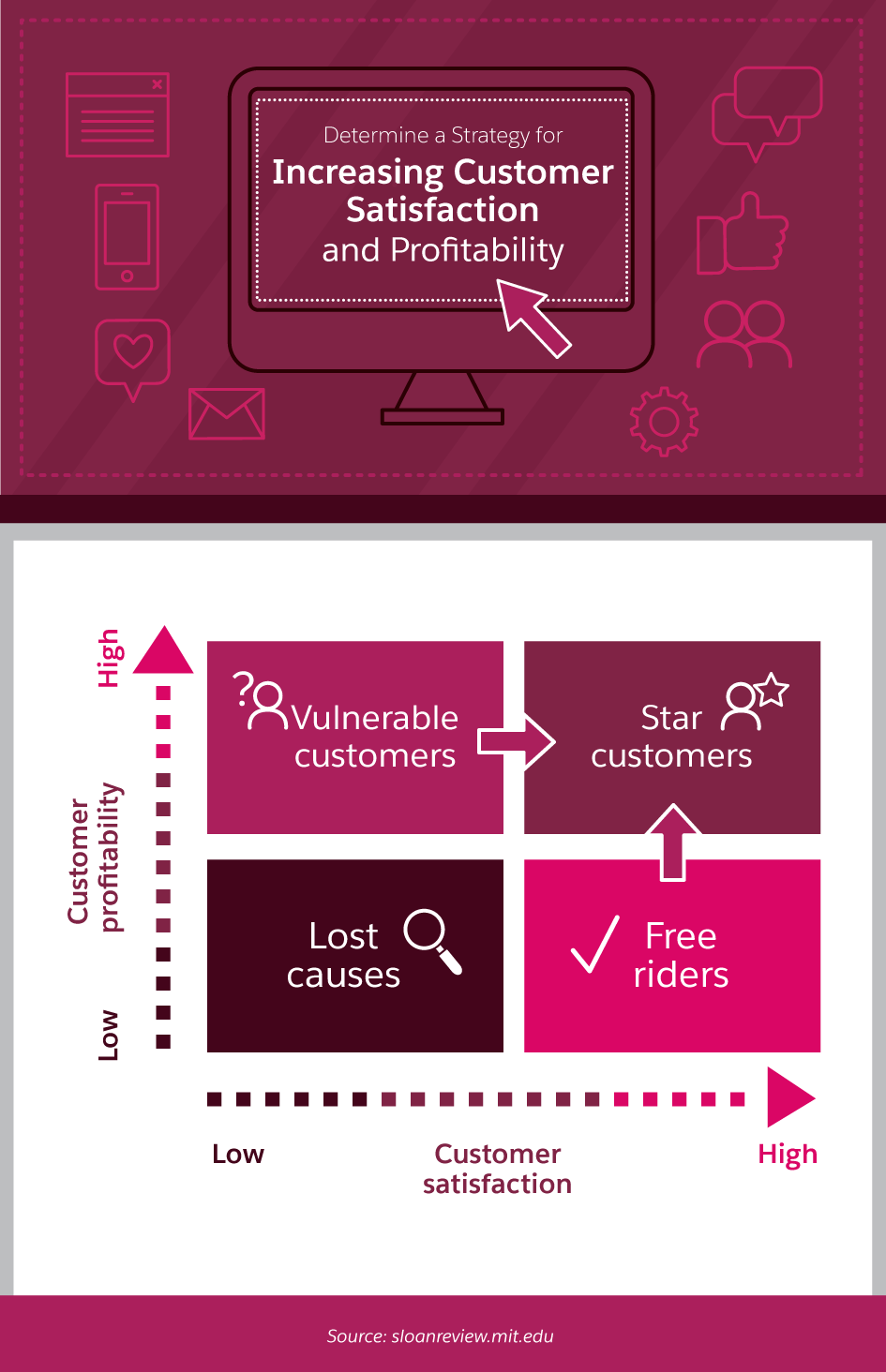how to measure customer satisfaction
Beyond Surveys: How to Measure Customer Satisfaction
.png)
Customer satisfaction has a major impact on several facets of your business, including sales, brand sentiment, marketing and advertising strategies, and more. Getting customer feedback via surveys is usually a fairly effective way to hear from your customers. However, since not everyone responds, and you don’t know if you’re getting the full picture or a fully honest answer, it’s necessary to track other customer satisfaction metrics. This data can help you get the full picture of how happy customers are with your products or services.
Below are some additional ways brands can track customer satisfaction on a regular basis, especially when they want to focus on improving customer experience.
Social Media Sentiment
Social media has become one of the largest channels for addressing customer complaints. Jay Baer of Convince and Convert found that “one-third of all customer complaints are never answered,” and most of them are on social media channels.
Customers use social media to feel like their voices are heard. Baer shares that “answering a complaint increases customer advocacy by as much as 25 percent.” However, letting a customer issue go unresolved will decrease customer advocacy “by as much as 50 percent.”
It’s important to track social media sentiment to see what customers are saying about your brand and products on social media. Tracking sentiment, which is also called social listening, can be done using online tools, and automated alerts let you know when someone is discussing your brand.

Alerts can be set for the following terms:
Exact brand and product names
Common misspellings of brand and product names. For example, fast food chain Jack in the Box could track “Jack in a Box,” and department store Nordstrom would likely need to track “Nordstroms.”
Branded nicknames. For example, Buffalo Wild Wings is often called “B-Dubs” by customers.
Mascot or employee names, especially if they are unique.
Sale names that are commonly tied to the company. For example, Victoria’s Secret could search for “semi-annual sale.”
If these terms yield results, they can help track brand sentiment and customer satisfaction. Additionally, positive reviews or messages could be shared on the brand’s social networks, while negative comments or complaints should be forwarded to the support team. Consider choosing a handful of both positive and negative results from your social media listening each month to review to help determine how satisfied customers are with your brand.
Customer Correspondence
It’s one thing to see what customers are saying about a brand on social media, but it’s another to track and record customers’ actual correspondence with your customer support team. Whether it’s through social media, online chat, or another support system, seeing what customers are talking about with customer support can give you a good idea of their satisfaction levels.
For instance, if the majority of the comments your support team receives in an average quarter are about order processing time, you would know that system likely needs to be addressed. Use your customers as a barometer for what needs to be improved in your business.
Tracking what people talk about with your customer service agents on each channel could lead to some valuable insights. You may notice that customers who place larger orders or people who purchase a specific product tend to use the support ticket option first, whereas single-item purchasers or new customers use social media when they need help. Knowing these trends can help you improve your resources and increase customer satisfaction.

Besides the main topic of the correspondence, taking note of emotions can help you measure customer approval rates. For the most part, it’s common for brands to receive some complaints or questions. How they are phrased can say a lot. For instance, anger, which is often expressed through cursing, all caps, or exasperated wording, may show that a customer is having a bad experience.
Conversely, upbeat messages with exclamation points, positive feedback, or even certain emojis can tell brands a lot about customer satisfaction. According to Sammi Caramela in Business.com, emojis are often used to help the recipient translate what the person is trying to say. They are becoming a common part of how we communicate, so examining which emojis are used can explain a lot about the message’s sentiment.
Measure Loyalty
Communicating with or about a brand lets customers speak their minds. They also demonstrate their level of satisfaction by continuing to purchase the product or service. According to the National Business Research Institute, it is up to five times more profitable to sell more products to an existing satisfied customer than to a new one.
Repeat purchases tell us a lot about customer satisfaction: If a customer continues to purchase an item over and over again, we know they are likely very satisfied with the product. This can lead to a higher customer lifetime value and the likelihood that customer will recommend the brand to their social network, both in person and online.
Repeat frequency, lifetime average value (the overall monetary value of a customer through the complete cycle of their relationship with a brand), and average cost per order are all metrics that speak to customer satisfaction. For instance, if a certain product is sold in larger numbers to repeat customers rather than to new ones, you may deduce a higher level of satisfaction with that product over one that is popular with new customers, but isn’t as popular with existing customers. Because of this, these metrics are also useful in determining marketing and product development decisions.

Promotional Response
There’s a lot of information about customer retention strategy and how to reward loyalty to keep high-value customers. Using certain strategies can tell us more about customer satisfaction. One option is looking at the effectiveness and response to specific promotions, such as coupons or seasonal sales.
Some types of promotions that could help measure customer satisfaction include:
Discounts on products they’ve purchased before. If lots of customers take advantage of a sale, you know they were happy enough with their initial purchase to buy it again. The discount just gives them extra incentive.
Channel-exclusive discounts. Social media followers usually connect with a brand on social media when they like the product or want to engage with a company. For this reason, offering promotions exclusively for a company’s social media fan base can help determine that particular audience’s overall customer experience, as well as increase engagement. This can be done with an email marketing campaign as well.
Referral or affiliate promotions. In most cases, the more likely a customer is to recommend your product or service to their network, the higher their enthusiasm for your brand.
These promotions can help you track how your existing customer base feels about your products. By letting their wallets speak for how happy they are, you’re able to gauge satisfaction without trying to get them to complete a survey.
No matter how you measure customer satisfaction, it’s important to consistently review what the mentions, sales, and communications actually mean. A monthly overall data analysis will go a long way toward helping you figure out what gives you the best overall picture of how happy your customers are.
You can look at each area to determine trends, which campaigns are most effective, and what seems to be working to increase overall customer satisfaction. From there, you can work with other departments on additional phases, including which processes to improve, the products or services that need tweaks, what you should stop selling, and how your overall brand sentiment relates to sales and conversions.

